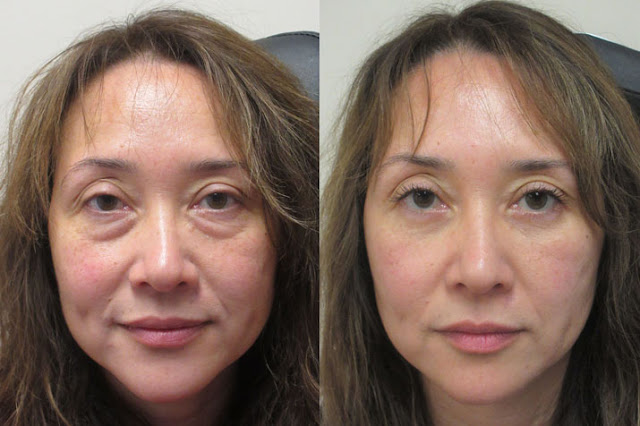Breast Augmentation | Boob Job | Patient Education
Breast Augmentation with Breast Lift Introduction
What Causes Breasts to Change Shape?
Breast Implant Placement – Step 3
Breast Lift Incision – Step 4
Incision Closure – Step 7
Breast Lift with Implants Results
For those women who would like to increase the size of their breasts as well as restore a firm, more upright position, a breast augmentation in combination with a breast lift can improve breast contours and revitalize their appearance. The breasts undergo changes in response to factors such as genetics, aging, pregnancy and breast feeding, weight gain or loss, and hormonal fluctuations. All of these factors can cause the breast size and shape to change. These changes can be dissatisfying and can make women feel as if they are losing some of their femininity and youthful vitality. Breast augmentation alone cannot restore the shape of the breasts.
Breast Anatomy
The breasts are composed of different types of tissue known as glandular, fatty, and fibrous tissue, which lie over the pectoralis muscle, along the chest wall. The glandular tissues are composed of lobules and milk ducts. Together, lobules and milk ducts are responsible for producing and transporting milk to the nipple, respectively during lactation. The glands within the breast are surrounded by a layer of fatty tissue that gives the breast its shape and soft form. Suspensory ligaments, which are made of fibrous, or connective tissue, are intertwined amongst the breast glands and milk ducts. These suspensory ligaments attach the breast to the chest wall and allow it to remain suspended, but move freely with the body.
The aging process and the effects of gravity play a primary role in the changes to the breast. Just like facial skin, the skin around the breast loses its elasticity in response to gradual breakdown of the skin’s support network, which causes the skin to become lax. In addition, the suspensory ligaments that attach the breast to the chest wall weaken and stretch over time in response to gravity. Additionally, the breasts enlarge during pregnancy and breast feeding, which causes the skin to stretch. Once the breasts reduce in size following pregnancy, the skin laxity may increase. Lastly, fluctuations in your weight and even hormonal changes that occur during menopause can cause changes in the appearance of your breasts. Together all of these factors can cause the breast to droop and sag, or rotate in a downward direction.
How a Breast Lift with Implants Works
Breast augmentation alone cannot correct sagging or drooping breasts. Simply increasing the volume, or size, of the breast will only cause the breast to sag more with time. When performed as a standalone procedure, breast augmentation can increase or balance the size of the breast, restore the breast volume, and restore the shape of the breast after partial or total loss. In contrast, during a breast lift procedure, loose, excess skin is removed and the remaining skin is tightened. As a result, the overall shape of the breasts is improved, and they are lifted to a new, more upright position. In combination, breast implants and a breast lift result in total rejuvenation, not only increasing the size of the breast, but restoring a firmer, perkier appearance as well.
Breast Augmentation and Lift Techniques
There are three general incision techniques used during breast augmentation, known as the areolar, infra-mammary, and trans-axillary incision. In addition, there is a variety of different breast lift incision techniques used to correct varying degrees of breast ptosis. These techniques include the peri-areolar, cirum-areolar, vertical, and anchor technique, and are used to treat increasing breast ptosis severity, respectively. Your physician will help you choose the incision that is best for you based on your preferences, anatomy, the position of your implants, and their preferred surgical technique. To learn more about the different techniques view the breast implant and breast lift animations.
Surgery Preparation
A breast augmentation in combination with a lift may last approximately two to four hours, depending on the complexity of the procedure and surgical technique that is used. Your plastic surgeon will most likely administer general anesthesia in which you are asleep during the procedure. In addition, they will draw guidelines along the incision site.
Breast Augmentation Incision –Step 1
The plastic surgeon will make an incision along the predetermined line. This animation depicts the infra-mammary technique in which a small incision is made along the infra-mammary fold of each breast. Using a cautery device, the physician will open the incision in order to gain better access to the breast tissue below. Although the incision will be made as inconspicuously as possible, its length and appearance may vary depending on the type and size of implant, your body contours, and the physician’s preference.
Breast Tissue Dissection – Step 2
The plastic surgeon will continue to separate the breast tissue with a cautery device in order to expose the pectoralis muscle. With the aid of a breast dissector and their fingers, the physician will then carefully create a pocket in which to place the breast implant.
As you may know, breast implants can be placed in two general locations, known as subglandular and submuscular placement. This animation depicts subglandular placement in which the breast implant is placed in a pocket formed beneath the breast tissue, but above the pectoralis muscle. In contrast, submuscular placement refers to an implant that is placed in a pocket partially or completely beneath the pectoralis muscle, against the chest wall. You should discuss the benefits of the different implant placement options in more detail with your physician.
There are two general types of breast implants known as saline-filled and silicone-filled implants. Most saline implants are filled during surgery, while silicone implants are typically pre-filled. This animation demonstrates the placement of silicone implants. The physician will insert the implant into the pocket and visually inspect your breasts to ensure that they are symmetric. They may adjust the pocket and the position of the breast implant itself to ensure that the desired look is achieved.
Before starting the breast lift, the plastic surgeon draws incision guidelines to indicate the areas of skin that will be removed to facilitate the desired amount of lift. This animation demonstrates the vertical technique. If you are interested in learning about the different breast lift techniques, please view our breast lift animation.
Using a scalpel, the physician carefully makes an incision along the pre-marked lines. The area that extends beyond the areola marks the new upper perimeter of the areola. The v-shaped area below the areola will be pulled together and tightened, resulting in a more upright breast position.
Skin Removal – Step 5
Using a variety of surgical instruments, the surgeon lifts the skin and separates it from the underlying tissues below. The areola and nipple are left intact, as the areas of surrounding skin are removed. In order to ensure that the breast has complete mobility, the physician may use a cautery device to undermine, or remove, tissue along the perimeter of the incision line.
Repositioning the Areola – Step 6
Once the excess skin has been removed, the surgeon will suture the uppermost perimeter of the areola to the outermost perimeter of the incision. In doing so, the areola and breast tissue are lifted to a new, more upright position.
The surgeon proceeds to close the incision by placing sutures along the vertical midline as well as around the perimeter of the areola. Some surgeons may choose to place external sutures along the incision as well. Prior to closing the incision completely, the physician may place a surgical drain inside each breast, although it is often not necessary. Lastly, steri-strips or gauze bandages may be applied in order to protect the incision sites as you heal.
Breast Lift with Implants Recovery
Your surgeon may recommend that you wear a type of compression garment following your procedure. This tight-fitting garment will help to reduce swelling by preventing fluid build up, as well as provide comfort and support as you heal. You will likely have to wear the compression garment for several weeks.
If surgical drains are present, they along with any bandages will likely be removed within a few days, while any non-dissolvable sutures may stay in place for one to two weeks. You may experience some minor pain, bruising, and swelling, as well as numbness around the areola—all of which should subside in several weeks. Although you may feel well enough to return to work in approximately one week, you should continue to avoid strenuous activity such as exercise for three or four weeks after your procedure to allow your body sufficient time to heal.
You will be able to notice a dramatic difference in the shape and position of your breasts immediately following your procedure. You may continue to notice a change in their appearance as swelling subsides and they settle into their new positions. In fact, it may take up to one year before the final results from your procedure are apparent. You will have permanent scars; however, the scars will slowly fade to thin, white lines with time. It is important to realize that if you become pregnant after having a breast lift, the effects of pregnancy and breast feeding may compromise the results, and cause your breasts to sag and change shape. While a breast augmentation with a breast lift cannot stop the aging process, it can help you not only improve the position of your breasts, but restore the fuller, shapelier appearance that you desire for years to come.
Source: http://www.plasticsurgery.org.au/
Relevant links
Relevant links


















Comments